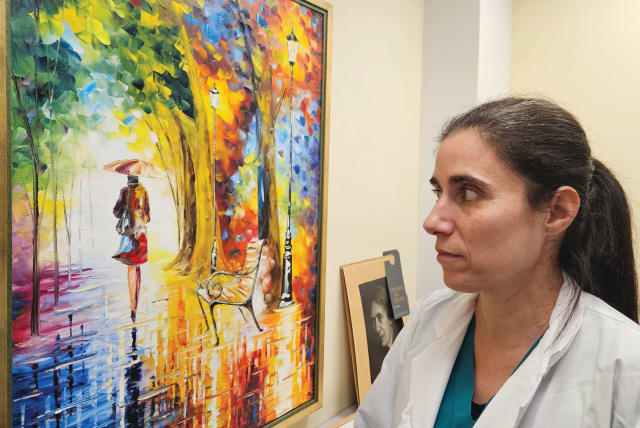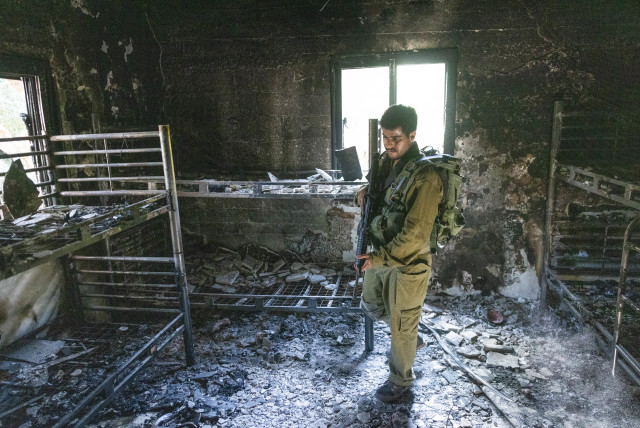Meet the forensic dentist identifying Israel's dead through their teeth

The job of a forensic dentist is never easy, she says. It requires respectful dedication to the dead and their living relatives.
In her day job, she brings back radiant smiles.
Dr. Esi Sharon-Sagie is director of the Oral Rehabilitation Post Graduate Program at the Hebrew University-Hadassah School of Dental Medicine. She is heralded for her keen eye for aesthetics, her gentle touch, and her devotion to detail. At 49 and now a leader, she’s teaching a new generation of dentists how to return teeth to health, function, and beauty. A studio full of before-and-after photos of joyous patients documents her success.
Then there’s her other job. Sharon-Sagie is also the newly appointed head of the Dental Division of Identification and Forensic Science of the Israel Police. The work itself isn’t new; Sharon-Sagie has been volunteering in this unit for 14 years. Her job is to identify bodies and human remains that cannot be identified using face recognition, fingerprints, or DNA.
She had heard a lecture about dental forensics and decided that she had the strength to do what seemed like sacred work. “Sometimes teeth are the only part of a person that connects them to their past lives,” she says.
Our teeth are unique. They have individualized characteristics such as dental fillings, extractions, surface structure, and root configuration. The gaps between them also matter. When she started, Sharon-Sagie had only one reservation: she couldn’t check the bodies of children. Her daughters were little, and she didn’t think she could handle the emotional impact of examining baby teeth. Now that they are older, she does that, too.
Over the years, she has helped identify unknown bodies and fatalities in human or natural disasters. After the 2010 Carmel Forest fire, she helped identify the 44 people burned to death. She also helped identify the bodies of the 10 students killed in the flash flood in Israel’s South in 2018, saving the parents the horror of looking at the “beautiful young people” and finding their own loved ones.
Being a forensic dentist post-October 7
The job of a forensic dentist is never easy, she says. It requires respectful dedication to the dead and their living relatives. Oct. 7 and the months that followed have presented challenges of a different magnitude.
Early in the morning of Oct. 7, Sharon-Sagie was lacing up her sneakers in her Jerusalem home for a day-off run. Slim and athletic, with a long brunette ponytail and the few first light touches of silver, she regularly runs half-marathons. But that morning, alerts on her cellphone stopped her in place. No running today, she told her husband, Tomer, a researcher at Yad Vashem who always accompanies her. Instead, while listening to the increasingly terrible news, she used her morning energy to take down the family sukkah. Then came rocket alerts in Jerusalem and notices from her police division to be ready for a possible call-up.
She got ready to leave, but the work could only begin the following day. There were so many bodies. They needed to be retrieved as quickly as possible, even under gunfire and missile attacks, so they wouldn’t be stolen.
The next day, Sharon-Sagie reported for duty at the IDF’s Shura Military Base near Ramle. A tent for anxious families was already full. She tried not to look at the anguished faces that would make it too hard for her to do her work. She put on her protective clothing.
Sharon-Sagie closes her soft hazel eyes as she describes the hundreds of body bags waiting on platforms. A granddaughter of Holocaust survivors, she carefully uses the Hebrew word dargashim, the same Hebrew term used to describe the wooden bunks in concentration camps.
“You have to put everything aside, including your emotions, to do this work faithfully,” she says. “No mistakes allowed.”
Soldiers have dental X-rays and give samples of DNA on induction, but there is no easily available source of dental records for civilians. They need to be gathered from private dentists, health fund dentists, and clinics all over the country.
Sharon-Sagie’s predecessor in this position had gone on holiday before the massacre and was on a ship, but she spent her time on deck, aiding from afar.
In Shura, Sharon-Sagie headed a team of 62 dentists, including 26 from her faculty. “Every single one has the heart, soul, and desire to give of themselves to do this work. Hundreds of others volunteered to assist us, but you need special training, and we didn’t have the time and resources to train them,” she says.
Soldiers and civilians who regularly volunteer came to help and did a grisly preliminary job, investigating the body bags to make sure the forensic dentists had received both head and body. An unprecedented number of men and women were decapitated.
Knowing the gender helps in the identification process. “We opened the body bags to see the gender, but often the bodies were so mutilated, we couldn’t tell,” Sharon-Sagie explains. Neither were the faces intact; jaws were decimated and teeth knocked out. Sometimes, they would receive a carefully gathered plastic bag of tooth chips.
They worked straight through the nights. Limited time and the desperate needs of the families pressed them on. Taking breaks only after their eight-hour shifts, the hands-on dentists used all their contacts to contribute to the ongoing effort to find dental records. “We worked 24/7 around the clock, knowing how important this work was. Outside, the families were waiting, counting on us to make the identification, rightfully impatient for answers. But this is slow work,” she says.
As the days went on, more bodies were found while the IDF took full control of the areas where the Oct. 7 massacre took place. Some were covered with so many maggots that the floor in the examination room swarmed with them. Other times, flies buzzed in their faces. “The smell of death is always with you, but you get used to it,” she says, her voice even softer. “The work is urgent, and you have to be systematic and focused, with daily goals and marking achievements.”
For three months, the teams worked non-stop, eventually identifying all of the deceased. They are still called in to identify more bodies about which they are prohibited from speaking.
From where does she have the fortitude to go on?
“We in Shura keep in mind that we’re doing hessed shel emet [compassionate concern and kindness of the living for the dead]. I keep telling myself that I’m a dentist; I know how to do this. It’s my privilege to do this work for my people.”
But the strain has changed her. “I haven’t been able to listen to music since Oct. 7,” she says. “I draw strength from my family, sitting at the Shabbat table with my husband and children. My husband always drives me back and forth from Jerusalem to Shura to give me support. And when I’m there with my team, I feel comfort in their comradeship and dedication, as we all know the scope of the challenge and the shared pain.”
Says this Israeli expert on smiles: “Ironically, sometimes, when our team is successful after working hours on a very hard case, even I find myself sort of smiling.”
The writer is the Israel director of public relations at Hadassah, the Women’s Zionist Organization of America. Her latest book is A Daughter of Many Mothers.
Jerusalem Post Store
`; document.getElementById("linkPremium").innerHTML = cont; var divWithLink = document.getElementById("premium-link"); if (divWithLink !== null && divWithLink !== 'undefined') { divWithLink.style.border = "solid 1px #cb0f3e"; divWithLink.style.textAlign = "center"; divWithLink.style.marginBottom = "15px"; divWithLink.style.marginTop = "15px"; divWithLink.style.width = "100%"; divWithLink.style.backgroundColor = "#122952"; divWithLink.style.color = "#ffffff"; divWithLink.style.lineHeight = "1.5"; } } (function (v, i) { });

